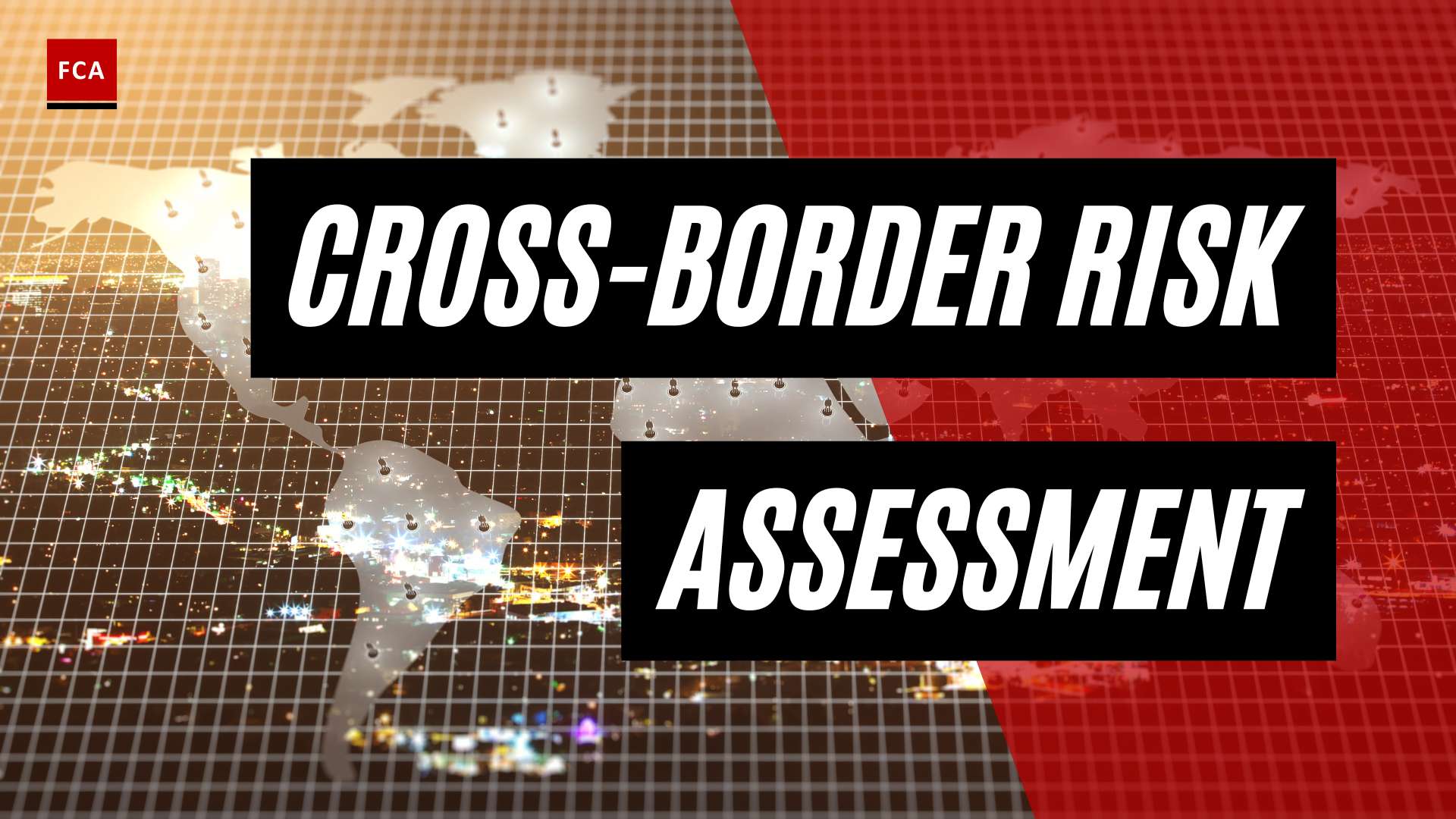The Importance of AML Training for C-Suite Executives
C-suite executives hold a crucial role in ensuring the effectiveness of Anti-Money Laundering (AML) programs within their organizations. To fulfill this responsibility, they must possess a comprehensive understanding of AML risks and the associated compliance requirements. By actively engaging in AML training, C-suite executives can contribute significantly to the organization’s efforts in combating money laundering and maintaining financial integrity.
Understanding AML Risks and Compliance
To effectively address AML risks, it is essential for C-suite executives to gain a comprehensive understanding of the regulatory landscape and the potential vulnerabilities that their organization may face. By participating in AML training programs, executives can stay informed about evolving AML regulations and the latest techniques used by money launderers. This knowledge enables them to identify potential AML vulnerabilities within their organization and take appropriate actions to mitigate the risks.
C-suite executives must also understand the consequences of non-compliance with AML regulations. Regulatory authorities penalize organizations that fail to demonstrate competence in their AML practices. By educating themselves on AML compliance requirements and the potential repercussions of non-compliance, executives can ensure that their organization operates within the boundaries of the law and avoids financial penalties and reputational damage.
Setting the Tone of Compliance
C-suite executives play a pivotal role in setting the tone of compliance within their organizations. Through their actions and communication, they establish the organization’s commitment to AML compliance and create a culture of integrity and accountability.
By actively engaging with key AML staff, executives can reinforce the importance of compliance expectations and promote a culture of transparency. They can demonstrate their commitment to AML compliance by prioritizing AML efforts, allocating appropriate resources, and regularly reviewing the organization’s AML program. This involvement and support from top-level management send a clear message to employees that compliance with AML regulations is a priority for the organization.
Participating in AML training programs also helps C-suite executives stay up to date with the latest AML best practices and regulatory updates. Ongoing education and updates ensure that executives remain knowledgeable about emerging money laundering trends and can make informed decisions regarding their organization’s AML strategies.
In summary, AML training for C-suite executives is vital to ensure they possess a comprehensive understanding of AML risks and compliance requirements. By actively engaging in AML training programs, executives can set the tone of compliance, promote a culture of integrity, and make informed decisions to protect their organization from money laundering risks.
Benefits of AML Training for C-Suite Executives
As the leaders of organizations, C-suite executives hold a critical role in ensuring the integrity and compliance of their businesses. AML (Anti-Money Laundering) training specifically tailored for senior management provides numerous benefits, enabling them to effectively navigate the evolving regulatory landscape and prioritize AML efforts within their organizations.
Keeping Up with Evolving Regulations
AML regulations are constantly evolving to keep pace with emerging money laundering risks and financial crime typologies. Regular AML training for C-suite executives is essential to keep them updated on these changes. By staying informed about the latest regulations, executives can make informed decisions that align with current AML requirements.
By understanding the regulatory landscape, C-suite executives can proactively address potential compliance gaps, ensuring that their organizations meet the necessary AML standards. This knowledge helps them to establish robust AML policies and procedures, reducing the risk of regulatory penalties and reputational damage.
Making Informed Decisions and Prioritizing AML Efforts
AML training equips C-suite executives with the knowledge and tools needed to make informed decisions about their organization’s AML efforts. By understanding the red flags of money laundering and recognizing potential AML vulnerabilities, executives can effectively assess the risks and allocate resources accordingly.
With AML training, executives are better equipped to prioritize AML initiatives based on the specific needs and risks of their organizations. This enables them to allocate resources efficiently, ensuring that the most critical areas of AML compliance receive adequate attention.
Moreover, AML training fosters a culture of compliance within the organization. When senior management demonstrates a commitment to AML training, it sets a positive example for the rest of the company, reinforcing the importance of AML efforts at all levels.
By prioritizing AML training for C-suite executives, organizations can enhance their overall AML compliance posture, reduce the risk of financial crime, and protect their reputation and financial integrity.
In the next section, we will explore the roles and responsibilities of C-suite executives in AML, further highlighting the importance of their engagement in AML training.
Note: To ensure ongoing education and updates regarding AML regulations and best practices, C-suite executives can also participate in senior management AML training workshops and take advantage of resources such as the FINRA Utility Menu for C-Suite Executives.
Sources: Deloitte, Advisense, HKMA
Roles and Responsibilities of C-Suite Executives in AML
C-suite executives, including top-level management and executive leadership, have a crucial role to play in Anti-Money Laundering (AML) efforts within an organization. Their active involvement and commitment to AML training programs are essential for effectively combating money laundering and promoting a culture of compliance. In this section, we will explore two key responsibilities of C-suite executives in AML: identifying potential AML vulnerabilities and promoting a culture of compliance.
Identifying Potential AML Vulnerabilities
C-suite executives must actively participate in AML training programs to become better equipped at identifying potential AML vulnerabilities within their organizations. By understanding the evolving nature of money laundering schemes and techniques, they can effectively assess and mitigate the risks associated with financial crime.
Through targeted AML training, executives gain insights into the red flags and indicators of suspicious activity that may point to money laundering. This knowledge enables them to oversee the implementation of robust AML controls and procedures throughout the organization, ensuring compliance with relevant regulations and standards.
By actively identifying potential AML vulnerabilities, C-suite executives contribute to the organization’s overall risk management framework. Their involvement is crucial in establishing a strong line of defense against money laundering and protecting the organization’s reputation and financial integrity.
Promoting a Culture of Compliance
C-suite executives play a critical role in setting the tone from the top and promoting a culture of compliance throughout the organization. They must effectively communicate the importance of AML compliance to all levels of staff, emphasizing the organization’s commitment to combating money laundering.
By demonstrating their own commitment to AML compliance, C-suite executives create a culture that values integrity, ethics, and adherence to regulatory requirements. This culture permeates throughout the organization, influencing the behavior and decisions of employees at all levels.
Through AML training, C-suite executives gain the knowledge and insights needed to foster a culture of compliance. They learn about the regulatory landscape, emerging trends in financial crime, and the implications of non-compliance. This knowledge equips them to effectively oversee AML efforts, ensure the implementation of appropriate policies and procedures, and drive the organization’s commitment to AML compliance.
To further strengthen the culture of compliance, C-suite executives should actively engage with industry peers, regulators, and relevant stakeholders. By staying informed about best practices, regulatory updates, and emerging financial crime trends, they can enhance their knowledge and share insights with their organization’s AML professionals. Collaboration and knowledge-sharing are essential components for building robust AML frameworks and maintaining effective AML compliance programs.
By fulfilling their roles and responsibilities in AML, C-suite executives contribute to the organization’s overall AML efforts, maintain regulatory compliance, and safeguard the organization’s reputation and financial integrity. Their active engagement in AML training programs and commitment to fostering a culture of compliance are essential for protecting the organization and mitigating the risks associated with money laundering.
Collaboration between C-Suite Executives and AML Professionals
To effectively combat money laundering activities and maintain the reputation and financial integrity of an organization, collaboration between C-suite executives and AML professionals is crucial. By working together, they can ensure a strong and robust anti-money laundering (AML) program, protecting the organization from financial and reputational risks.
Effective Combat against Money Laundering
Collaboration between C-suite executives and AML professionals is essential for the effective combat against money laundering activities. C-suite executives, as the top-level decision-makers within an organization, provide the necessary leadership and support to drive AML efforts. They set the tone from the top, emphasizing the importance of compliance and creating a culture of integrity and accountability (Deloitte).
By actively participating in AML training and staying informed about the latest AML regulations and best practices, C-suite executives can better understand the risks associated with money laundering and ensure that appropriate measures are in place to detect and prevent illicit activities. This collaboration allows for a holistic approach to AML, where the expertise of AML professionals is combined with the strategic vision and decision-making capabilities of C-suite executives.
Maintaining Reputation and Financial Integrity
Maintaining the reputation and financial integrity of an organization is a shared responsibility between C-suite executives and AML professionals. Money laundering activities can have severe consequences, including significant financial penalties, reputational damage, and loss of customer trust. By collaborating effectively, C-suite executives and AML professionals can mitigate these risks and demonstrate a strong commitment to compliance.
C-suite executives play a critical role in setting the tone from the top, establishing a culture of compliance, and ensuring that anti-money laundering policies and procedures are effectively implemented across the organization. They provide the necessary resources and support to enable AML professionals to carry out their responsibilities effectively. This collaboration ensures that AML efforts are aligned with the organization’s strategic objectives and that compliance is a priority at all levels of the organization (Financial Crime Academy).
By working closely together, C-suite executives and AML professionals can establish robust internal controls, implement effective monitoring systems, and respond promptly to emerging risks. This collaboration helps to safeguard the organization’s reputation, protect its stakeholders, and maintain the trust of regulators and customers.
The collaboration between C-suite executives and AML professionals is crucial in the fight against money laundering. By leveraging their respective expertise and working together, they can create a culture of compliance, stay ahead of evolving AML regulations, and effectively combat money laundering activities. This collaboration is vital for organizations looking to ensure their financial integrity and protect their reputation in an increasingly complex and challenging regulatory environment.
Key Components of AML Training for C-Suite Executives
To ensure effective Anti-Money Laundering (AML) programs within organizations, C-suite executives need to possess a comprehensive understanding of AML risks and the associated compliance requirements. That’s why regular and tailored AML training for senior management is crucial. Such training equips C-suite executives with the necessary knowledge to fulfill their responsibilities in combating money laundering and maintaining financial integrity.
Understanding the Regulatory Landscape
AML training for C-suite executives should begin with a thorough understanding of the regulatory landscape. This includes familiarizing themselves with key regulations and guidelines, such as the Bank Secrecy Act (BSA) and the Financial Action Task Force (FATF) recommendations. By staying informed about the latest AML regulations and requirements, executives can ensure that their organizations remain compliant and avoid potential legal and reputational risks.
Recognizing Red Flags of Money Laundering
Recognizing the red flags of money laundering is another critical component of AML training for C-suite executives. They must be able to identify suspicious activities or transactions that may indicate potential money laundering. This includes understanding common techniques used by money launderers, such as structuring, layering, and smurfing. By recognizing these red flags, executives can take appropriate actions to mitigate the risks and protect their organizations.
Reporting Requirements and Consequences of Non-Compliance
C-suite executives should also be well-versed in the reporting requirements related to suspicious activities. They need to understand the importance of timely and accurate reporting to the appropriate regulatory authorities, such as the Financial Crimes Enforcement Network (FinCEN). AML training should cover the specific reporting obligations and the potential consequences of non-compliance, including fines, penalties, and reputational damage.
By focusing on these key components, AML training for C-suite executives enables them to play an active role in the organization’s AML efforts. They become better equipped to identify potential AML vulnerabilities, promote a culture of compliance, and make informed decisions to prioritize AML initiatives. To further enhance their understanding and knowledge, executives can also participate in senior management AML training workshops for a more interactive and practical learning experience.
Remember, AML training for C-suite executives is an ongoing process. It is important for executives to stay updated on evolving AML regulations and risks through continuous education and regular updates. By demonstrating a commitment to compliance and maintaining a culture of compliance at the leadership level, organizations can effectively combat money laundering and safeguard their reputation and financial integrity.
Fostering a Culture of Compliance at the Leadership Level
To ensure effective anti-money laundering (AML) practices throughout an organization, it is crucial to foster a culture of compliance at the leadership level. C-suite executives play a vital role in setting the tone for compliance and transparency within their organizations. This involves actively demonstrating commitment to compliance and staying educated on the latest developments in AML regulations and best practices.
Demonstrating Commitment to Compliance
C-suite executives must actively participate in AML training programs to become better equipped at identifying potential AML vulnerabilities, effectively communicating the importance of compliance to staff, and promoting a culture of compliance throughout the organization (Deloitte). By investing in AML training for C-suite executives, organizations demonstrate their commitment to compliance, ethics, and integrity. This commitment enhances their reputation, builds trust with stakeholders, and mitigates the risks associated with financial crime (Financial Crime Academy).
C-suite executives must lead by example, adhering to AML regulations and reinforcing compliance expectations. This includes actively engaging with key AML staff to understand the organization’s AML risks and ensuring that appropriate controls are in place to mitigate those risks. By demonstrating a commitment to compliance, C-suite executives set the foundation for a strong compliance culture throughout the organization.
Ongoing Education and Updates
The regulatory landscape surrounding AML is constantly evolving. To effectively combat money laundering and keep organizations in compliance, C-suite executives must stay informed about the latest regulations, emerging threats, and best practices in AML. Regular AML training and ongoing education are essential for C-suite executives to remain up-to-date and make informed decisions regarding the organization’s AML efforts (Deloitte).
By staying educated, C-suite executives are better equipped to understand the strategic implications and potential business impacts of non-compliance. This enables them to align AML efforts with the organization’s overall objectives and make informed decisions regarding resource allocation and risk management (KPMG). Ongoing education and updates ensure that C-suite executives are aware of emerging risks and can adapt the organization’s AML strategies effectively.
Through their commitment to compliance and ongoing education, C-suite executives foster a culture of vigilance and accountability at the leadership level. This sets the tone for the entire organization, emphasizing the importance of AML efforts and promoting a strong compliance culture throughout the organization.
To learn more about AML training for senior management, you can explore resources such as the FINRA Utility Menu for C-suite executives and the importance of AML efficiency in the interest of the C-suite (Financial Crime Academy). These resources provide valuable insights and tools to support AML training initiatives for senior leadership.
AML Training for C-Suite Executives: Best Practices
When it comes to AML training for C-suite executives, it is essential to provide tailored training that addresses the specific roles and responsibilities of senior management. By focusing on the unique needs of executives, organizations can ensure that their leaders are equipped with the knowledge and skills necessary to effectively oversee AML efforts. Two best practices for AML training for C-suite executives are tailored training for specific roles and compliance training for directors.
Tailored Training for Specific Roles
C-suite executives hold different positions within an organization, each with distinct responsibilities. Therefore, it is crucial to provide tailored AML training that aligns with their specific roles and functions. This specialized training should encompass essential topics such as understanding the current AML/CFT regulatory landscape, emerging trends, financial crime typologies, and the implications of non-compliance (HKMA). By tailoring the training to the needs of executives, organizations can ensure that their senior management is equipped with the knowledge required to effectively oversee AML/CFT efforts within their organizations.
For example, executives responsible for strategic decision-making may require a deeper understanding of the impact of AML regulations on their organization’s risk profile and business operations. On the other hand, executives overseeing operational functions may benefit from training that focuses on practical implementation and monitoring of AML controls. By tailoring the training to the specific needs of each executive role, organizations can enhance the effectiveness of their AML efforts and promote a culture of compliance at the leadership level.
Compliance Training for Directors
Directors play a critical role in the governance and oversight of AML/CFT programs. It is essential to provide specialized training for directors that covers key areas such as BSA/AML programs, Fair Lending efforts, the CRA Program, and Overdraft guidance (Bankers Online). Directors need to have a comprehensive understanding of their responsibilities and the specific requirements related to AML/CFT compliance. By providing directors with targeted compliance training, organizations can ensure that their board members are equipped with the knowledge and tools necessary to fulfill their obligations effectively.
Compliance training for directors should also include an emphasis on the relevance of technology and RegTech solutions in AML efforts. Understanding how technology can streamline AML processes and enhance risk management is crucial for directors to make informed decisions on implementing AML solutions within their organizations (HKMA). By incorporating technology-focused training, organizations can empower directors to leverage technological advancements in their AML/CFT programs, resulting in more efficient and effective compliance measures.
In conclusion, AML training for C-suite executives should be tailored to their specific roles and responsibilities. By providing targeted training, organizations can equip their senior management with the knowledge and skills necessary to oversee AML efforts effectively. Additionally, specialized compliance training for directors ensures that they have a comprehensive understanding of their responsibilities and the specific requirements related to AML/CFT compliance. By implementing these best practices, organizations can enhance their AML programs and promote a culture of compliance at the leadership level.
Next, we will explore the available resources and tools for AML training to further support C-suite executives in their AML compliance efforts.
Resources and Tools for AML Training
To support the AML training needs of C-suite executives, there are various resources and tools available to enhance their understanding of anti-money laundering practices and regulations. These resources can assist senior management in staying informed and proactive in maintaining compliance within their organizations.
FINRA Utility Menu for C-Suite Executives
C-suite executives can access the FINRA Utility Menu to access services and information relevant to their industry. This menu provides a range of capabilities, including filings, requests, reports, and the ability to submit support tickets. By utilizing this utility, C-suite executives can stay updated on regulatory developments, access essential resources, and ensure compliance with AML requirements.
Importance of AML Efficiency in the Interest of the C-Suite
In today’s business landscape, increased government scrutiny and regulatory enforcement have led organizations to prioritize AML training for C-suite executives. Regulators now hold senior management accountable for their knowledge and competence in AML practices, penalizing organizations for any lack thereof (Advisense).
Non-compliance with AML regulations can result in severe consequences for organizations, including financial penalties and reputational damage. Therefore, it is crucial for C-suite executives to receive thorough AML training to ensure they are well-versed in the practices and requirements necessary to mitigate money laundering risks (Advisense).
By investing in AML training for C-suite executives, organizations not only fulfill compliance obligations but also foster a culture of integrity, ethics, and accountability. Senior management’s engagement in AML training demonstrates a commitment to combating financial crime and establishes a strong anti-money laundering culture throughout the organization (Advisense).
To ensure AML efficiency and effectiveness within organizations, C-suite executives must stay updated on the evolving AML landscape. This includes understanding the latest regulations, recognizing emerging trends in money laundering, and implementing appropriate measures to address AML risks. Ongoing education and access to relevant resources are vital for senior management to make informed decisions and drive compliance at all levels of the organization (Advisense).
In conclusion, organizations can leverage resources like the FINRA Utility Menu and recognize the importance of AML training in the interest of the C-suite. By providing senior management with the necessary tools and knowledge, organizations can strengthen their AML efforts, maintain regulatory compliance, and safeguard their reputation and financial integrity.
Key Components of AML Training for C-Suite Executives
To ensure effective anti-money laundering (AML) compliance within an organization, it is crucial for C-suite executives to receive comprehensive training tailored to their roles and responsibilities. AML training for C-suite executives equips them with the knowledge and skills necessary to combat financial crimes like money laundering. This section explores the key components of AML training for senior management.
Understanding the Regulatory Landscape
C-suite executives must have a deep understanding of the AML regulatory landscape to ensure compliance within their organizations. This includes staying up-to-date with evolving AML regulations and requirements that may impact their industry. Through AML training, senior executives gain insights into the latest regulatory changes and best practices for maintaining compliance. This knowledge enables them to make informed decisions and allocate resources effectively to bolster their organization’s AML efforts.
Recognizing Red Flags of Money Laundering
AML training equips C-suite executives with the ability to identify potential red flags of money laundering. By understanding the indicators and patterns commonly associated with illicit financial activities, executives can proactively detect suspicious transactions or behaviors within their organization. Recognizing these red flags allows them to take appropriate action, such as conducting further investigations or reporting suspicious activities to the relevant authorities.
Reporting Requirements and Consequences of Non-Compliance
C-suite executives need to be familiar with the reporting requirements related to suspicious transactions and other AML obligations. AML training provides them with insights into the reporting procedures and helps them understand the potential consequences of non-compliance. By grasping the importance of timely reporting and the potential legal and reputational risks associated with non-compliance, executives can ensure that their organizations adhere to regulatory requirements and maintain a strong culture of compliance.
To support their AML training, C-suite executives can utilize various resources and tools designed specifically for their needs. These resources aim to enhance their understanding of AML regulations and facilitate effective decision-making.
Resources and Tools for AML Training
FINRA Utility Menu for C-Suite Executives
The Financial Industry Regulatory Authority (FINRA) offers a utility menu specifically tailored to the needs of C-suite executives. This resource provides comprehensive information on AML regulations, enforcement actions, and industry-specific guidance. C-suite executives can leverage this tool to stay informed about the latest developments in AML compliance and enhance their knowledge base.
Importance of AML Efficiency in the Interest of the C-Suite
C-suite executives should recognize the importance of AML efficiency within their organizations. This means implementing processes and systems that streamline AML compliance and mitigate the risk of financial crimes. AML training highlights the significance of AML efficiency for senior management and emphasizes the potential benefits, such as enhanced reputation, reduced legal and regulatory risks, and improved financial integrity.
By combining their expertise and knowledge gained from AML training with these resources and tools, C-suite executives can effectively lead their organizations in combating money laundering and maintaining a strong culture of compliance.
AML training for C-suite executives is an essential investment for organizations aiming to safeguard their financial systems, protect their reputation, and demonstrate their commitment to ethical and compliant business practices. Through targeted training, senior management can fulfill their roles and responsibilities in the fight against money laundering, ensuring a robust AML program throughout the organization.








